Vegan Macaron Guide
Hello friends! Today we are going to go over some tips and troubleshooting on this awesome Vegan Macaron Guide I have prepared for you!
Also, a video where I am explaining to you this guide! Watch it on YouTube or here on this post!
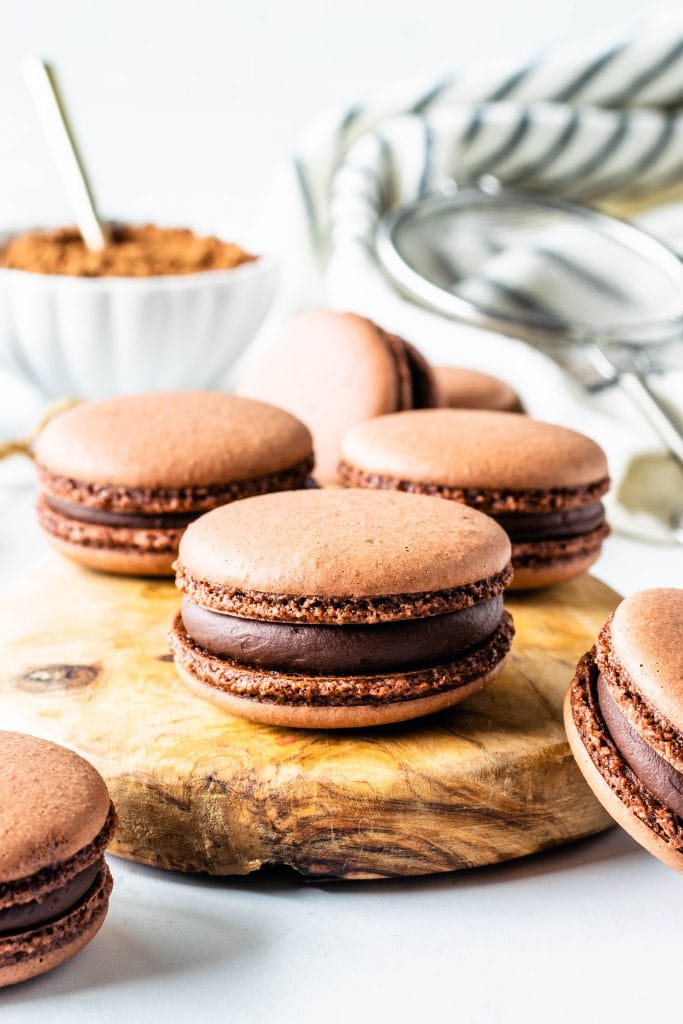
Pictured above are my Vegan Chocolate Macarons.
This post may contain affiliate links. I earn a commission from qualified purchases. Please read our Privacy policy here.
I have been making Vegan Macarons for a while now, and it’s been a huge learning experience. Vegan Macarons are not a recipe for beginner bakers, for people who are looking for easy recipes, or for people who are looking for fool-proof recipes, as there’s no such thing in the macaron baking world.
There’s absolutely no such thing as a one method, one recipe fits all when it comes to macarons.
So my first suggestion to you will be: experiment with different methods and recipes until you find the right one for you. It may take some shopping around.
And yes, almond flour and the other ingredients cost money, which is why I recommend doing your homework before attempting, and even after attempting once or twice, still continue to do your homework, to minimize the amount of failed batches.
So, with that in mind, I am collecting here on this Vegan Macaron Guide a lot of information that may help you, in case you are a beginner baker, or in case you have had failed batches of vegan macarons and you want to improve them.
Vegan Macaron Guide
We will go over the main areas to pay attention to when making vegan macarons! Let’s do it!
The Aquafaba
I use aquafaba from a chickpea can. As in I purchase a chickpea can, drain the water and use the chickpea juice to make vegan macarons.
On my previous posts, I used to recommend to reduce the aquafaba before making the macarons. My instructions were to boil the aquafaba until it reduced to about half, and then let it cool in the fridge for a few hours, and then using it to make macarons. However, I DON’T reduce the aquafaba anymore. It makes absolutely no difference reducing or not, and it eliminates a huge step, and waste of time.
So I simply open a can of chickpeas, drain them, and immediately use that water to make vegan macarons.
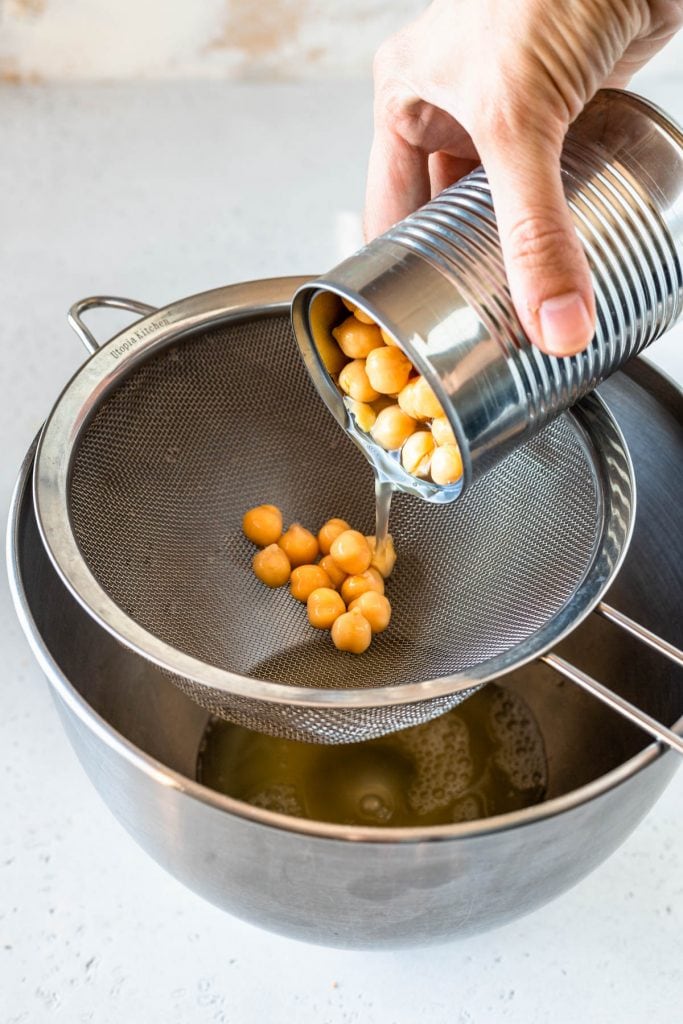
Some people want to use homemade aquafaba, as in they want to boil dry chickpeas to obtain the liquid. Here is a good guide on how to do that: Homemade aquafaba by Lazy Cat Kitchen.
With the chickpeas, I usually make something like these Chickpea Salad Avocado Boats, or these Crispy Chickpea Tacos. And of course, there’s always hummus.
Some people use other liquids, from different beans, or even potato protein, recently became big in the vegan macaron baking community. I haven’t experimented with the potato protein yet, but I’ve had requests for it, so soon I hope to attempt.
I stick to the chickpeas aquafaba and that works great for me, and if you are a beginner, that’s a good place to start.
The Meringue
Whip the aquafaba with an electric mixer, and add cream of tartar to help stabilize the meringue. If you can’t find cream of tartar where you live, use the same amount of vinegar, or lemon juice, or you can just skip it.
Start whipping on low and then gradually increase the speed to medium or medium-high, and slowly add the sugar in about 3 additions, to help the sugar dissolve with the aquafaba.
Now here is something extremely important: make ABSOLUTE sure to whip the meringue to stiff peaks!
This is what the meringue has to look like:
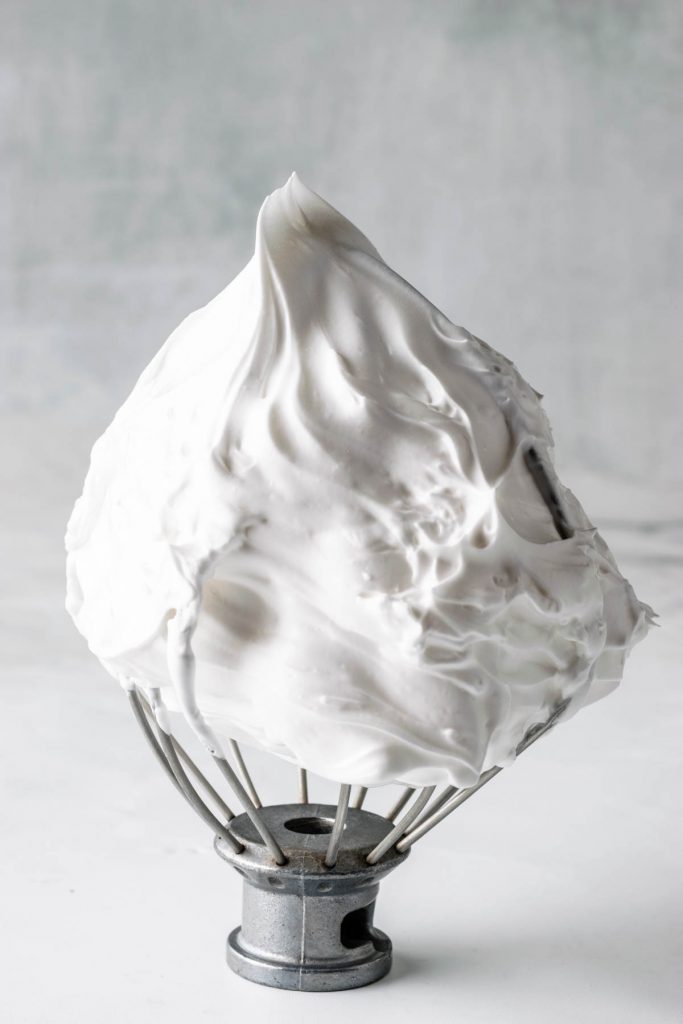
It can take even up to 15 minutes to achieve the stiff peaks! It depends on the mixer you are using, the speed, and even on the aquafaba. Be patient!
Under whipped meringue will cause several issues, such as:
- runny batter
- cracked macarons
- macarons that spread out in the oven
The Macaronage
Now let’s talk about the macaronage.
Once you add the dry ingredients to the meringue, you will start folding them together until you achieve the perfect consistency. This process is called Macaronage.
If you have baked egg whites macarons before, you probably have heard the term “figure 8 stage” when it comes to the perfect batter consistency. And I used to even use this term to refer to the perfect consistency for the vegan macaron batter also.
HOWEVER! Listen to me good people! Don’t fold your vegan macaron batter until you achieve the figure 8 stage! In the figure 8 stage, you’re supposed to pick up the macaron batter and be able to draw several figure 8s with the falling batter without the batter breaking up. If you do this with the vegan macarons, there are great chances the macarons will spread out in the oven!
You MUST stop before you achieve this stage! This will also get rid of your hollow issues, in many cases!
Fold the batter until it becomes runny, but it doesn’t necessarily need to flow off the spatula on a ribbon stage! If that happens, the macarons will likely spread out when baked!
Check out on the following clip what the proper consistency should be. Just press play and it will show you the minute 3:30 of the Vegan Lemon Blueberry Macarons video, where I am finishing the macaronage.
Over folding the macaron batter will cause:
- feet that spread out or explode
- cracked shells
- hollow macarons
Under folding the macaron batter will cause:
- bumpy shells with a pointy tip on top
It’s always best to under fold, and then fold more if necessary. However, once you fold too much, there’s no turning back.
To test the batter, you can grab a teaspoon and drop it on a baking sheet. If it spreads out nicely after a few seconds, the batter is good to go. And if the macaron forms a pointy tip on top, it means it needs a couple more folds.
Also have in mind that the vegan macaron shells don’t often look over mixed, even if they are. They seem fine when you pipe them, only to have feet that explode and spread out in the oven later. So you want to be on the careful side!
The Oven
Let’s talk about your oven for a second here.
On this Vegan Matcha Macarons post I go into detail about the oven when making vegan macarons. So make sure to read that post.
But I will start by saying this: Don’t even attempt to make macarons (vegan or non-vegan) without an oven thermometer! I mean this!
Oven thermometers are inexpensive, and will save you a lot of wasted ingredients and failed batches! So please get one before starting!
I have three in my oven, it helps me find out hot spots in my oven. But even if you don’t want to have more than one, just one will help.
Home ovens are almost never accurate when keeping the temperature to what you set it to! Never!
The oven’s internal thermometer is gauging the temperature of where it’s installed, which is on a spot in the back or sides of the oven, where it’s subjected to drafts or hot spots, so it’s not actually telling the temperature of the inside of the oven, where the macarons are baking.
And the ovens cycle in and out, in order to keep a stable temperature.
Each oven is different, and you will have to figure out what works best for your own oven.
So my tips for mastering your oven are:
- Have an oven thermometer.
- Experiment with different temperatures and times. Pipe your macaron between 4 different trays, and experiment with different temperatures and oven rack position.
- If the macarons are cracking or spreading out, turn the temperature down.
- If the macarons aren’t forming a bottom, or look like they have speckles in them and are gooey on the inside, turn the temperature up, or bake them longer.
Read this post please for more details about how to figure out your oven!
And more tips about the baking part of making vegan macarons:
- Use light colored baking sheets and mats. Dark baking sheets and mats retain more heat, and may cause cracked shells, or feet that spread out.
- Lower the temperature by 10% if using convection oven.
I hope this post was helpful! Please make sure to watch lots of videos, read blog posts such as this Vegan Macaron Guide, and get your knowledge on making vegan macarons to minimize wasted ingredients, and also frustration! You can do this! I believe anybody can master macarons, vegan or not! And you can do it too!
Stay tuned for more informational posts. Subscribe to my newsletter, so you can stay on the loop and get notified about new posts!
Here are some of my Vegan Macaron recipes you may enjoy:
- Vegan Matcha Macarons
- Vegan Lemon Blueberry Macarons
- Vegan Vanilla Macarons
- Vegan Pistachio Macarons
- Vegan Coffee Macarons
- Vegan Biscoff Macarons
- Vegan Strawberry Macarons
- Vegan Chocolate Macarons
Thanks for reading today’s Vegan Macaron Guide! Have a lovely day!


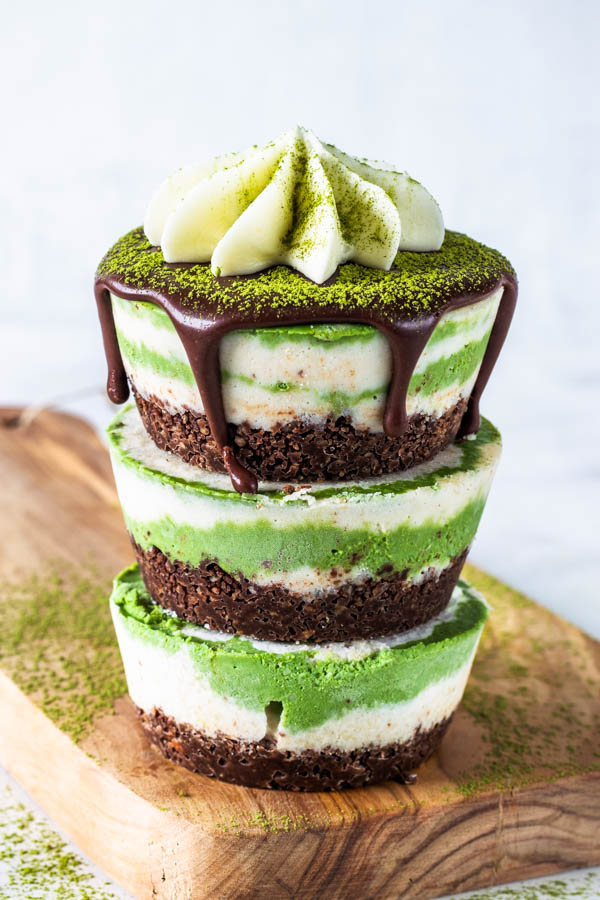
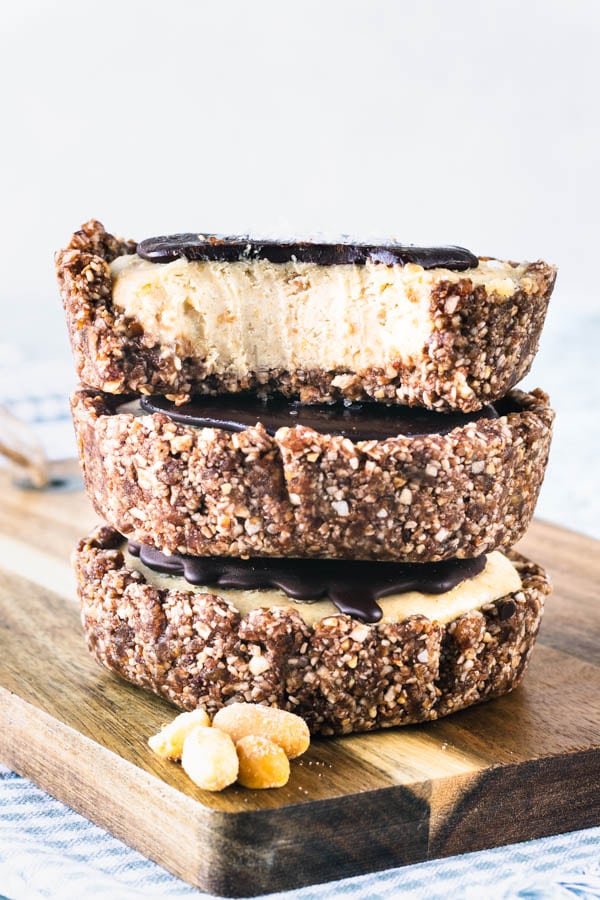
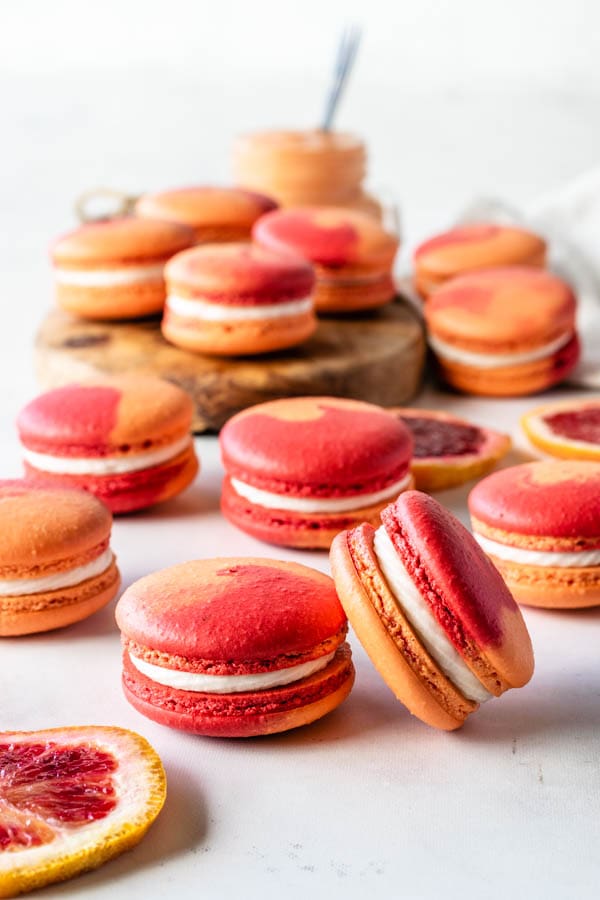
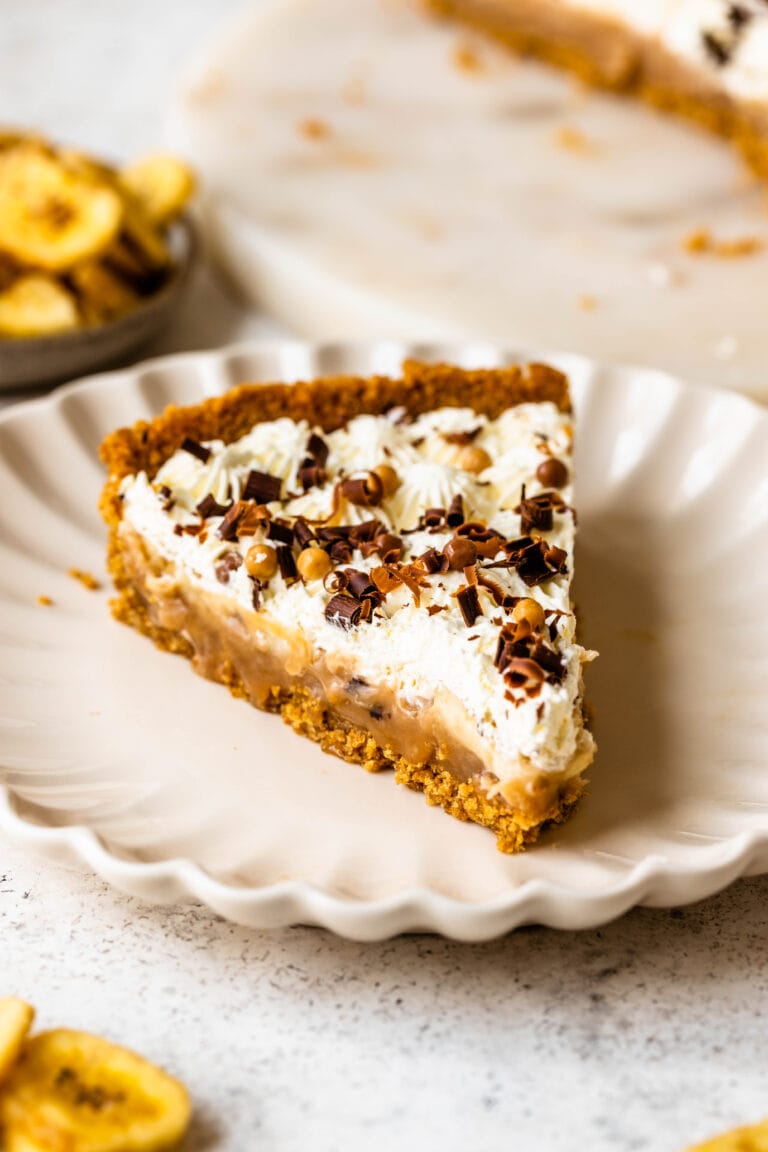

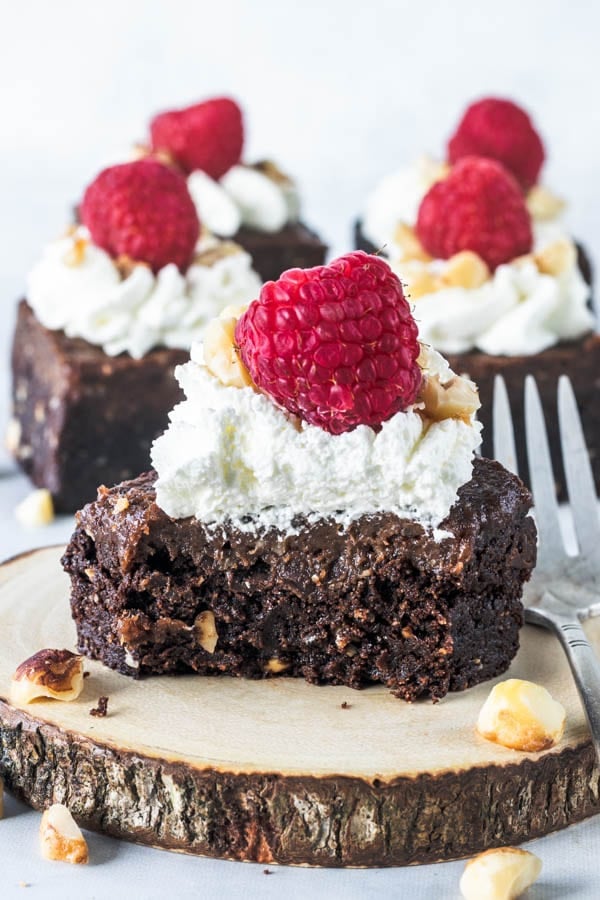
Thank you! You explain everything so well.
To freeze macarons for an event would you freeze them as shells then defrost and assemble when needed, or would you fill and assemble them and then freeze?
Thanks 😊
it depends on what you are filling them with. If you are going to fill them with any jam or curd I’d recommend freezing the plain shells and then filling a couple days before the event. And if it’s a buttercream or chocolate filling, it’s totally fine to freeze the filled cookies.
And you don’t need to defrost the shells before filling them, you can just pull them right out of the freezer and fill them.
Can I use the vegan macaron batter to create a dacquoise.for a birthday cake? I saw in the regular recipes the possibility, but how about the vegan one? Any thoughts and tips?
Do you have to immediately use the aquafaba or can I store it in the fridge for a while?
yes you can store it in the fridge for a couple of days!!
Leftover chickpea water can use for next macaron recipe ?? 😊
yes sure! I never leave it longer than 2 to 3 days in the fridge though.
Does the vegan version taste significantly different?
It does taste different, the texture is also different.
When I made them, they deflated when they came out of the oven. Why could this be?
My first batch when I piped them they completely spears out. Any idea what would cause this?
under whipped meringue, or most likely over mixed batter. It could also be oven temperature. Vegan macarons are super finicky.
Hey Camila I have been making vegan macarons from sometime and am having issues with little hollow and slant macarons so I think oven temperature might be the issue as am doing everything else properly. As you mentioned here that we need to keep oven thermometer to know the exact temperatures, but when I preheat my oven at 285 F my thermometer inside shows around 260 F only, even after 10 to 15 minutes. So do I need to preheat my oven around 300 F to get 285 F in thermometer inside or do I calibrate the oven so that both the top and inside temperatures match?
Yes you’d have to turn the temperature up a bit!
Huzzah! Cannot wait to try this recipe/advice/guidance next time.
I failed miserably on a recipe earlier today. I don’t care to reduce the aquafaba either. Thank you for sharing recipes that skip that method altogether!!!
My batter looked runny going into the piping bag and the shells seemed foamy. Pry from under mixing/over folding/adding too much coloring?
They baked flat and bubbly . . . taste was still fine as I added a little almond extract but that could’ve added to the batter consistency being off as well.
I feel like reducing the liquid with the sugar caused them to be extra sticky.
Thank you for sharing your knowledge!
I definitely think that adding almond extract will alter the batter, the vegan batter is extremely finicky.
Keep practicing!! You can do this!!
Omg I’m so glad I found your blog!!! Thank you so much for explaining so well. My vegan macarons dont show a sign of the foot but I’m going to play with the temperature and let see what happen
Can I freeze the aquafaba for later use? If so, do I just thaw out in room temp or fridge to use?